Artistic Focus | This latest archeological discovery can prove that "South China Sea I" has come to Guangzhou?
Author:Yangcheng Evening News Yangche Time:2022.07.17
Text/Yangcheng Evening News All -Media Reporter Literary and Art Treasures/Interviewees (except signed)
As the most familiar ancient ship in Cantonese, the "South China Sea I" is also the only sinking site that is directly named after the sea in my country. Any point comes from the new progress of its research, with its own popularity and topicality.
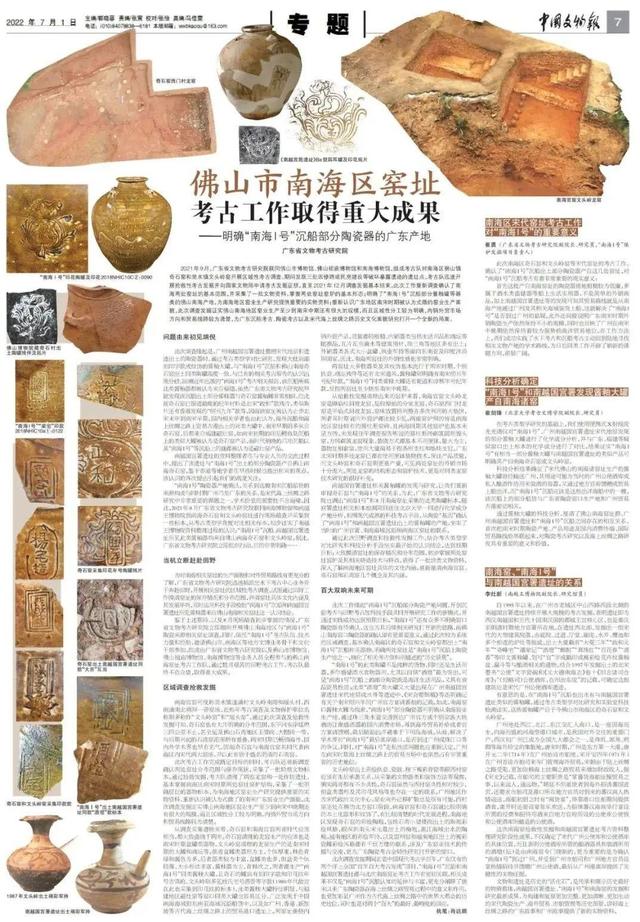
The whole version of "China Cultural Relics" published this new archeological discovery (the article was written by Xiao Dushun, the Guangdong Provincial Cultural Relics and Archeology Institute)
It was reported a few days ago -Guangdong's cultural relics archeologists first confirmed that some of the ceramics from the "South China Sea I" were produced from the kiln mouth of the South China Sea in Foshan, Guangdong, and then inferred that Guangzhou Port may be the last offshore port before it sank. This has aroused widespread concern in the Cultural Expo.
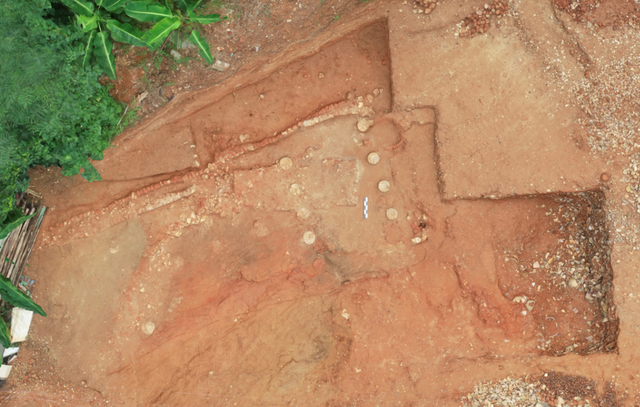
The ruins of Kiln Site of Ximen Village (Long Kiln)
Earlier, ceramics, which are "South China Sea I", is generally considered to be known as the Fujian and Qingyi kiln, Dehua kiln, magnetic stove kiln, Huntian kiln in Jingdezhen, Jiangxi, and Longquan kiln in Zhejiang. The association between the boat and Guangzhou.
Now this conclusion is rewritten, what kind of scientific demonstration process has been experienced? A reporter from Yangcheng Evening News further sought answers from experts participating in archeology and demonstration.
| Source | The "Encomptor Wicker" was found on the site of the South Vietnam National Palace
This new archeological discovery is closely related to the excavation and finishing of another major site of Guangzhou, the site of the South Vietnam National Palace.
Li Zhixin, deputy dean of the King's Museum of Nanyue, introduced that from 2005 to 2009, they dug a more complete Song Dynasty building base site in the northwest of the Palace Department, and also unearthed a large number of "three years of view", "political and political and political and" political and political and political In the first year, "" Qifeng House "," Pan Family Ji "," wine "," alcohol "," Baihuachun "and other printed glaze cans, and the relics related to winemaking with the word" official ".
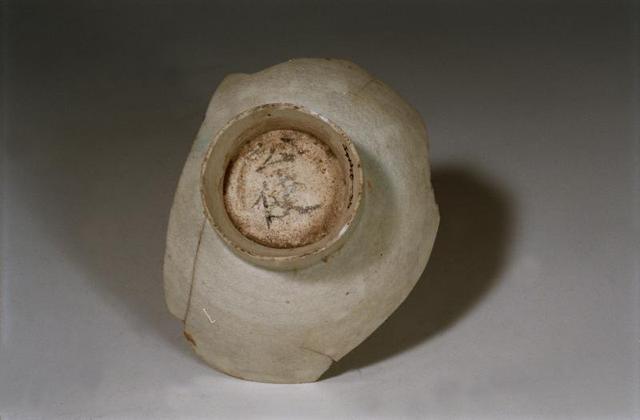
The "East Enforcement" text of the Song Dynasty ink Book of Song Dynasty in the Southern Vietnam National Palace site
Li Zhixin said that the earliest records of Guangzhou's local Zhi Zhi and rich content are "Yuan Da De Nanhai Chronicle". The Volume 10 "Old Chronicles Warehouse" records "Ambassador Wicker, in the East of the State" (translation: The location of the Guangzhou Mission Master is the gallery east of the state).
He also combined the ruins of the Northern Song Dynasty in Mo Shu "Master" porcelain bowl unearthed in the Northern Song Dynasty in 1997. Rites.
"Next I want to verify whether these unearthed utensils are similar to whether the utensils unearthed in other parts of Guangdong are the first thing to think of is the" South China Sea I ", because there are many similar cans on the boat."

All kinds of utensils unearthed from Qi Shi Kiln and Wentou Ling Kiln in the South China Sea
However, Li Zhi Xin found that the archeological report of the "South China Sea I" generally sets the sauce glaze tank out of the water from the Fujian magnetic stove kiln. In fact, some of them are the same as the cans unearthed from the Nanyue National Palace. The Qi Shi kiln in the Song Dynasty was very close.

Qishi Kiln Qishi Village Workshop Rites
Li Zhixin asked the opinion of Li Yan, a research librarian of the Guangdong Provincial Institute of Cultural Relics and Archeology, and carefully studied the results of the predecessor of the sauce glaze pots unearthed from the archeological sites of Guangdong, Hong Kong and overseas in Guangdong, Hong Kong, and overseas. Xiao Dashun, deputy director of the Institute of Underwater Archeology, compared some of the sauce glaze tanks of "South China Sea I" in detail.
They further believe that the ceramic tank out of the South China Sea I is not all produced in magnetic stove kiln, and some of them are produced in Foshan, Guangdong.
Empirical | "Wine Store" and "Ship Ship" discovered large cans high -level homologous
In August 2021, the Guangdong Provincial Institute of Cultural Relics and Archaeological Research Institute and the South China Sea Museum and the South Vietnamese King Museum were conducted on the spot to conduct on -site inspections at Qishi Kiln and Wentou Ling Kiln in Ximen Village, and collected some specimens one after another.
Li Zhi has a new harvest: "I found a piece of pottery with text on it.

Sauce glaze -colored pottery fragments discovered at Wentou Ling kiln site
Immediately afterwards, they combined with Peking University Archaeological Board Academy to analyze XRF origin of porcelain specimens of several different sources of porcelain in scientific instruments.
The results show that some of the sauce glaze on the "South China Sea I" shipping ship is indeed produced in Qishi Kiln or Wentou Ling Kiln, and it is closely related to similar products unearthed from the Nanyue National Palace. It is closely related to the history of Guangdong Kilnkou and the history of Guangzhou as the ancient port of the Song Dynasty.
During the Tang and Song dynasties, Guangzhou was the largest port in the East. In the second year of Tang Kaiyuan (714), the city ship was set up in Guangzhou. In the four years of Song Kaibao (971), the first city shipping department in Guangzhou was specially managed to manage overseas trade.
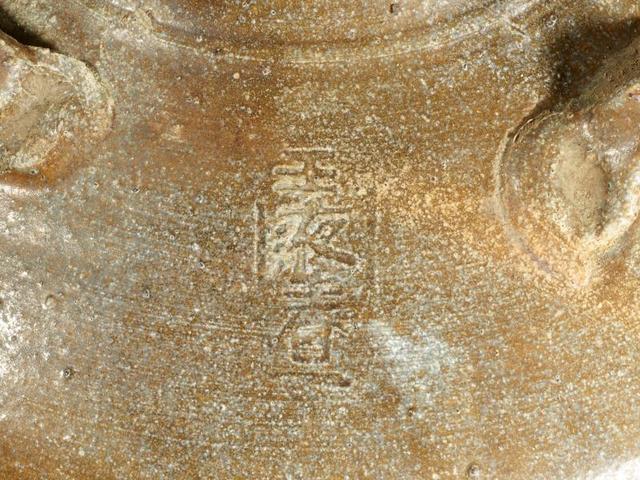
"South China Sea I" out of the "Jade Light Spring" tank text
The court not only sent messengers to seduce the vassal tribute overseas, but also asked the local officials of the city ships and local officials to welcome the sending the merchants who arrived. liquor".
On the large can of "South China Sea I", information such as "wine", "jade liquid spring" or poke seal of each name of each surname was discovered; The big cans unearthed are also the same "wine".
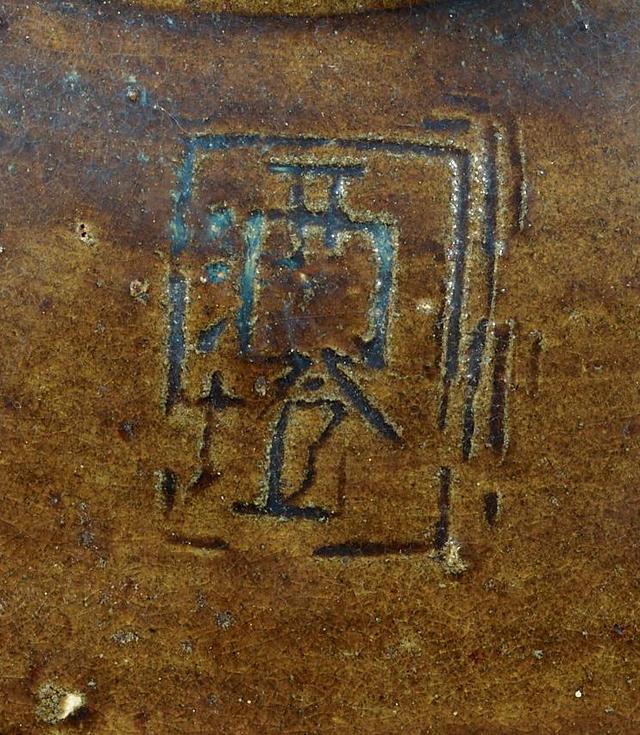
"South China Sea Ⅰ" out of the "wine" specimen

The "wine 墱" specimen unearthed from the site of the South Vietnam National Palace
According to this archeologist, these large cans are likely to be a liquor container customized by Guangzhou local government or private workshop in Qishi Kiln and Wentou Ling Kiln. , Private wine, "South China Sea I" went to Guangzhou to put them out of the ocean, and unfortunately sank to the junction of Taishan and Yangjiang, Guangdong Province hundreds of miles away. | Related | Kiln mouth production, port distribution
Li Yan believes that Qi Shi kiln products have been discovered on the "South China Sea I" ship, and it is discovered in Guangzhou in the Song Dynasty trade distribution center. It is also found in the local kiln site. The three are closely related. A characteristic of kiln archeology is valuable. This shows that the "South China Sea I" stayed in Guangzhou.
"South China Sea I" printed pottery pot

He said: "Guangdong has started to produce porcelain used for transportation and packaging goods very early. On the" Blackstone "sank in the Tang Dynasty, it was found that this kind of" Guangdong can ". The large -glaze cans of Qishi Kiln and Wentou Ling Kiln also belong to this type. The large number of production of storage tanks reflects the development of the cargo distribution and packaging industry. The characteristics of the city. "
Examination of ceramic export should attach importance to the storage of transit and distribution in trade ports.
Li Yan said that Shanghai, Taicang and other areas have been found in the Song and Yuan Dynasties. The ceramic storage relics were found in the Song and Yuan Dynasties, including kiln products such as Jingdezhen and Longquan. These warehouses and vessels were close. It can be seen that the kiln is responsible for production and the port is responsible for distribution. There is an archeological site in the Datong Restaurant in Guangzhou, which excavated a large number of ceramics. It can be seen that Guangzhou was also a ceramic transaction distribution center at that time.
"South China Sea I" pottery printing

"The Guangzhou Port relies on the Pearl River Water Department, and the pottery produced by the Nanhai Kiln will be transported to Guangzhou nearby, and then loaded into the sea, which is also in line with the principle of commercial costs." This is also an important evidence that "Nanhai I" has come to Guangzhou.
Cui Yong, deputy dean of the Guangdong Provincial Institute of Cultural Relics and Archeology, who is familiar with the "South China Sea Ⅰ" underwater archeology, said that these strange stone kiln sauce glaze cans are placed on the No. 9 and 10 on the ship. This is the widest position in the middle of the hull. The focus of the ship.
According to the rules of ocean navigation at that time, the middle position of the empty ship was the most likely to be replenished. This also means that "South China Sea I" may come to Guangzhou before the voyage. After adding the supply, it will go to the sea from Guangzhou Port. He said, "This is the most logical inference at present."
"South China Sea I" printing on the "Liang Zhai" printed on the pottery
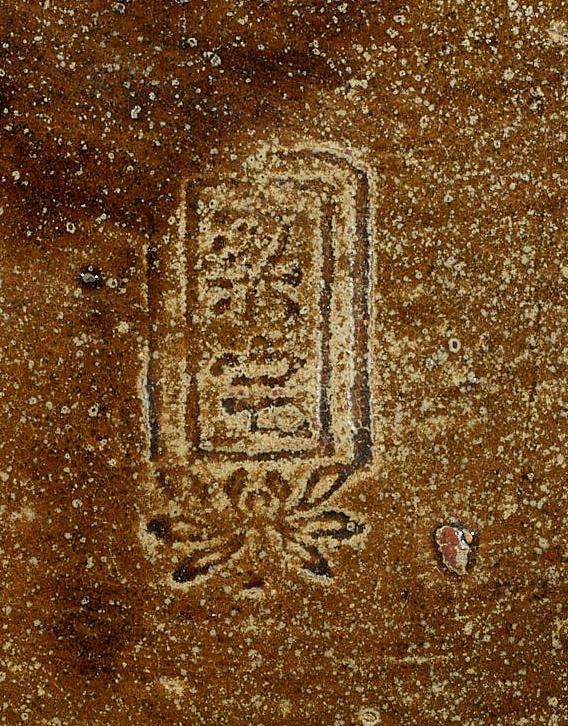
It proves that "South China Sea I" has been to Guangzhou not to hunt for strangeness, but is extremely academic.
Li Yan believes that in the case of not being recorded at present, this is the method of using underwater archeology and field archeology. For the first time, a specific kiln site, a shipwreck and a nearby cargo distribution center can Explain the importance of the shipping department of Guangzhou.
| Extension | Breeding new topics and new directions of "Haisi" research
On July 4, the research team of the National Social Science Foundation's major project "Research on the Study and Governance System of the South China Sea Sea Sea Sea Sea Sea in the Ming and Qing Dynasties" also organized it to investigate the Nanhai District Museum of Foshan.
Li Qingxin, the chief expert of the research team, the director of the History and Sun Yat -sen Institute of the Guangdong Academy of Social Sciences and the director of the Sun Yat -sen Institute and the director of the Marine History Research Center, believes that the excavation of Qishi Kiln has determined the history of its early production and export. The social and economy has an important position, and it is an important production area for exported porcelain in China.
Nanhai Guanyao Wentou Ling Dragon Kiln
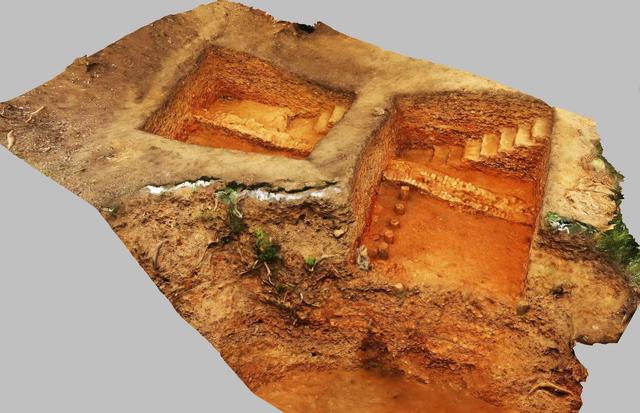
He said that Qishi Kiln products found in this shipwreck that proved that "South China Sea I" stopped from China to overseas, stopped and transported new items in Guangzhou, including food and beverages loaded with Qishi kiln storage tanks. Essence This is also inspired by us. There are a large number of unknown commercial goods on the boat, maybe some are produced in Foshan or elsewhere in Guangdong, and they are loaded in Guangzhou. This is worth further deepening research.
The stamp of the printed year of the Qishi kiln

Cui Yong proposed that the excavation of Qishi Kiln has urgency and has a huge role in promoting the legacy of Haisi in my country. The "South China Sea I" was found on the shipwreck of Qishi Kiln, which enhanced the status of this kiln mouth, and the research on Qishi Kiln's excavation will also open many new directions and new topics.
For example, the "South China Sea I" was found to be canned salted duck eggs, sheep bones, bayberry and other foods. Most of the bottles and cans loaded with these pickled foods were from Qishi kiln. It can be seen that Guangzhou may be an important navigation food supply place at that time.
July 16, 2022 "Yangcheng Evening News" A11 related reports

Source | Yangcheng Evening News · Yangcheng School
Responsible editor | Deng Qiong
School pair | Pan Liling
- END -
The full process of the public resources trading center of Haidian District Public Resources Trading Center is safe and fast
Today, a total of 7 bidding projects are carried out in the center. There are 2 bids for construction projects in the morning and 1 water project evaluation. In the afternoon, there are 2 bids for co
Chairman Betry was suspected of insider trading by the Case of the Bei Stock Exchange to question whether the target of the transaction was the company's stock
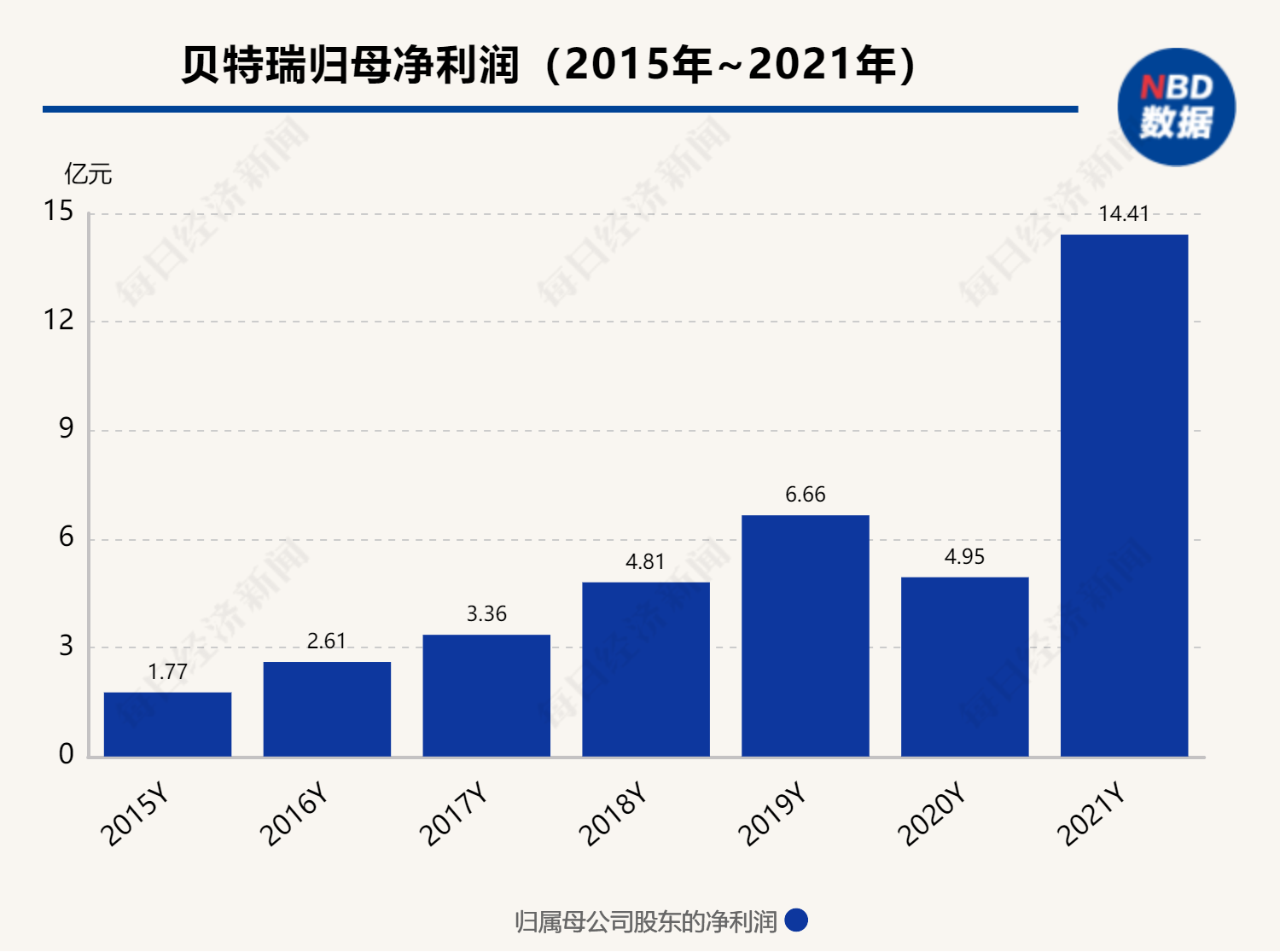
On the evening of July 20, Betry (BJ835185, the stock price of 73.83 yuan, and a m...